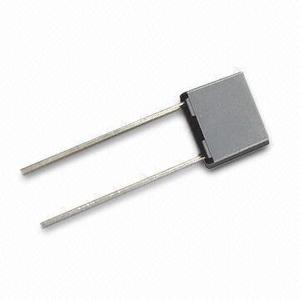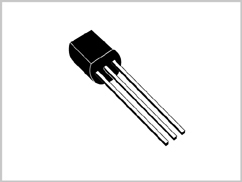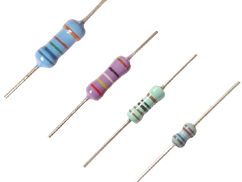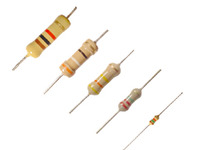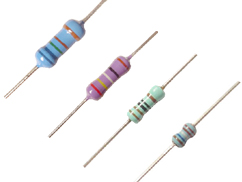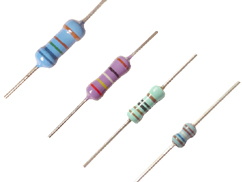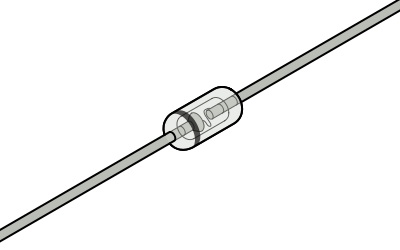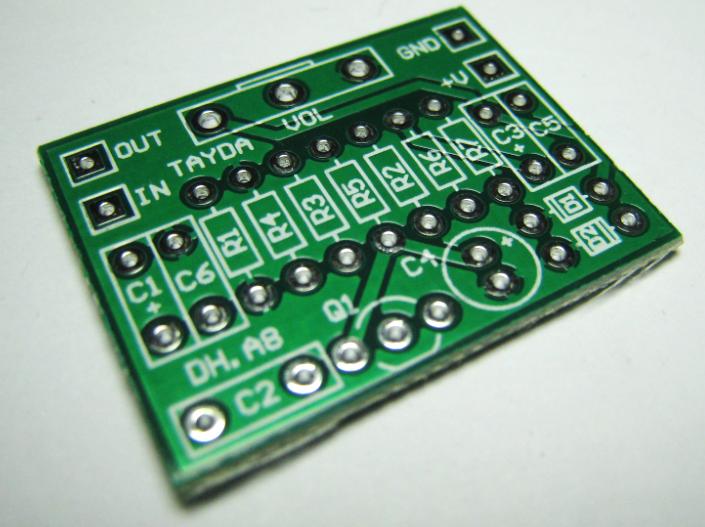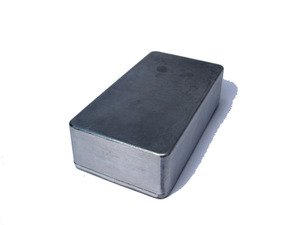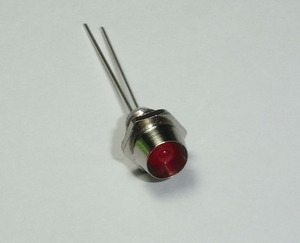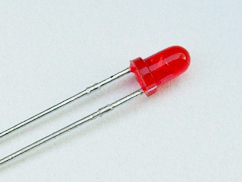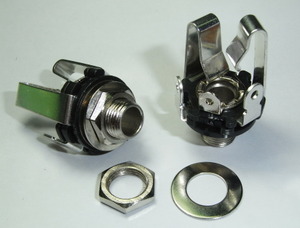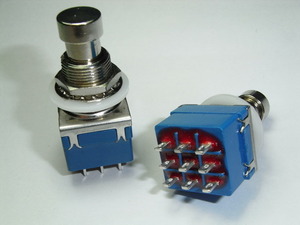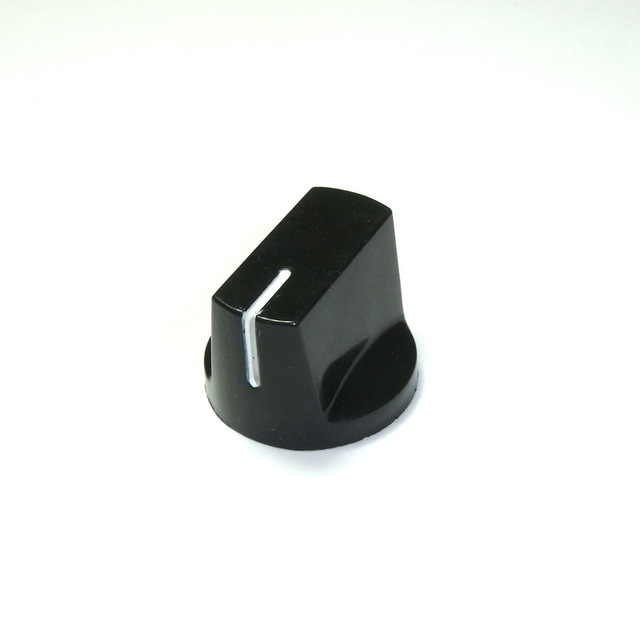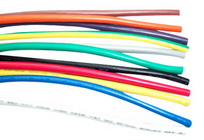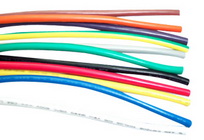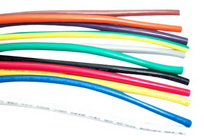Electra Distortion
The Electra Distortion is a simple and great overdrive/distortion pedal that emulates the tone of a cranked Tweed amp.Steps
Categories
Status: Active
Designators and components Step 2 of 5
PCB DESIGNATORS
PCB GUITAR BOOST PCB
Resistors
R1 1M 1M OHM 1/4W 1% METAL FILM RESISTOR
R2 2.2M 2.2M OHM 1/4W 1% METAL FILM RESISTOR
R3 Jumper
R5 680 680 OHM 1/4W 1% METAL FILM RESISTOR
R6 Jumper
R7 47k 47K OHM 1/4W 1% METAL FILM RESISTOR
Capacitors
C1 100n 100NF 100V 5% POLYESTER FILM BOX TYPE CAPACITOR
C3 100n 100NF 100V 5% POLYESTER FILM BOX TYPE CAPACITOR
Transistors
Q1 2N5088 2N5088 GERENAL PURPOSE TRANSISTOR
Diodes
D1 1N34 1N34 SWITCHING SIGNAL DIODE
D2 1N4148 1N4148 SWITCHING SIGNAL DIODE
Potentiometer
VOL 100k-A 100K OHM LOGARITHMIC POTENTIOMETER
PCB

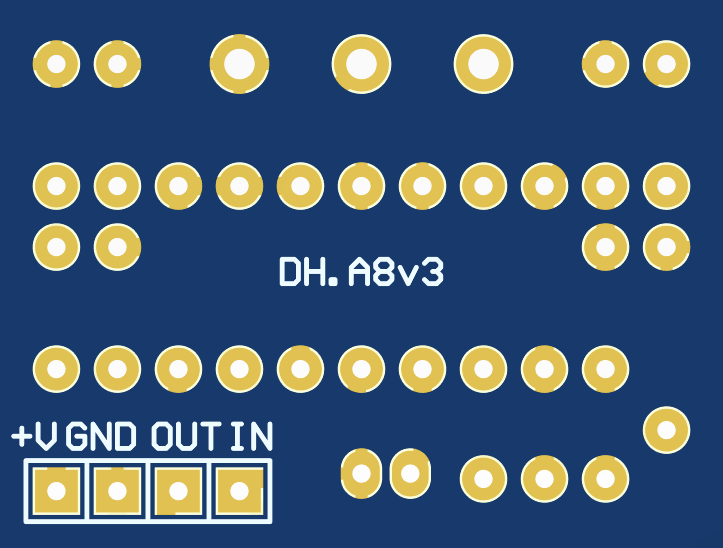
PCB SCHEMATIC
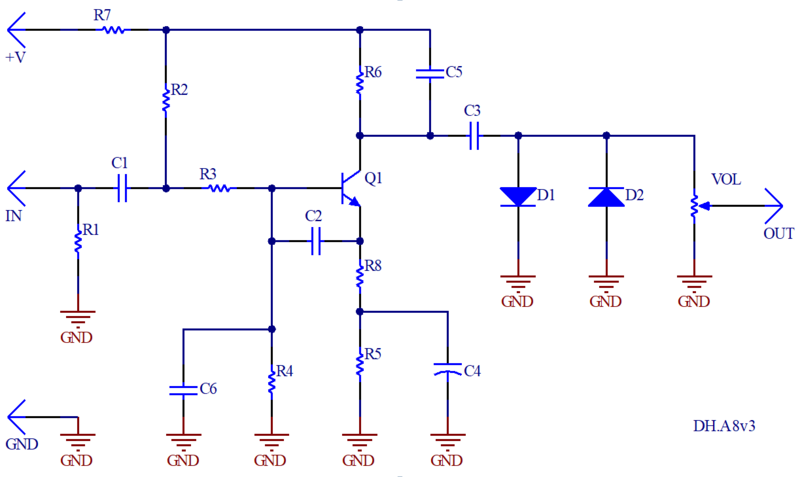
The table below lists several projects you can build with the DH.A8 PCB.
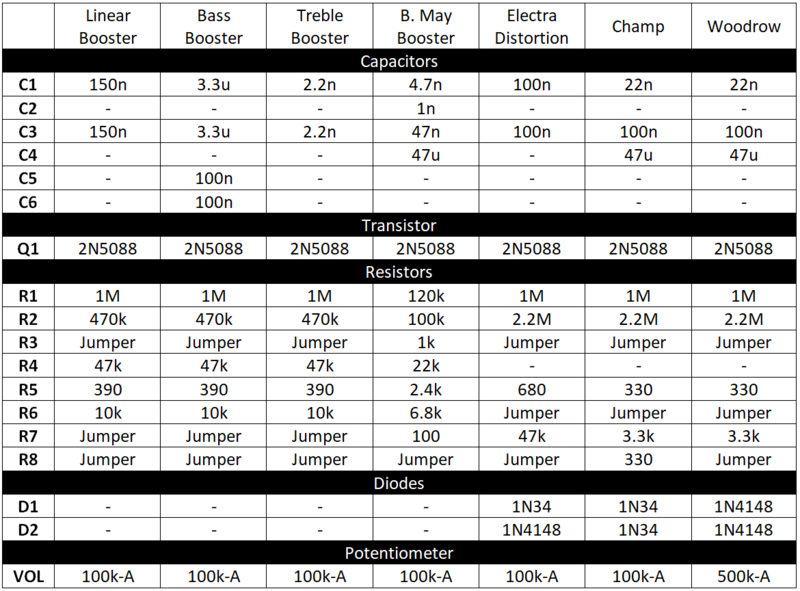
GENERAL DESCRIPTION OF COMPONENTS
Resistors
Resistors don't have polarity, so you can place them in any direction. Determine their resistance value by using a multimeter or by reading the color bands.

Electrolytic capacitors
Electrolytic capacitors have their value and maximum voltage rating printed on the body. The negative pin is indicated by a white stripe along the can, and it also has a shorter leg. The longer leg is positive. Never exceed the maximum voltage rating. Ensure the capacitor's voltage rating is at least double that of your power supply (e.g., use an 18V capacitor for a 9V power supply).
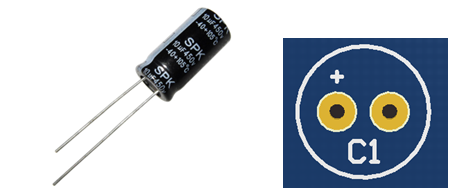
Polyester capacitors
Polyester capacitors don't have polarity and can be placed in any direction. Their value is marked using a three-number code. The first two numbers represent the first and second digits of the value, and the third number is the multiplier code (read in picofarads, pF).

Ceramic capacitors
Ceramic capacitors don't have polarity and can be placed in any direction. Their value is marked using a three-number code. The first two numbers represent the first and second digits of the value, and the third number is the multiplier code (read in picofarads, pF).
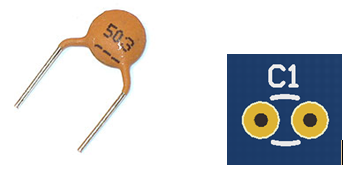
Diodes
Diodes have their model number printed on them. The polarity (cathode) is indicated by a stripe or ring near one end. This ring corresponds to the polarity marking on the PCB.
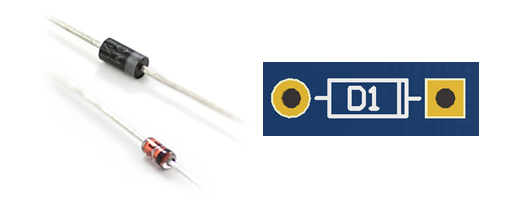
Led diodes
LEDs (Light Emitting Diodes) have polarity. The cathode is indicated by a flat edge on the side of the LED's plastic casing and a shorter leg. The longer leg is the anode. On the PCB, the cathode is marked with a flat side and the anode with a round side.

Transistors
Transistors are three-terminal components with their model number printed on them. To ensure correct orientation, one side of the transistor's body is flat while the other is curved.
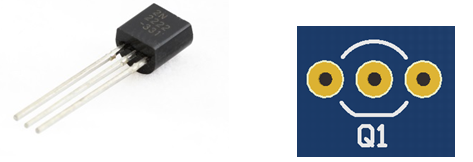
Potentiometers
Potentiometers have their resistance value marked on them. They are also marked with a letter to indicate their taper: A for logarithmic, B for linear, and C for reverse logarithmic.

